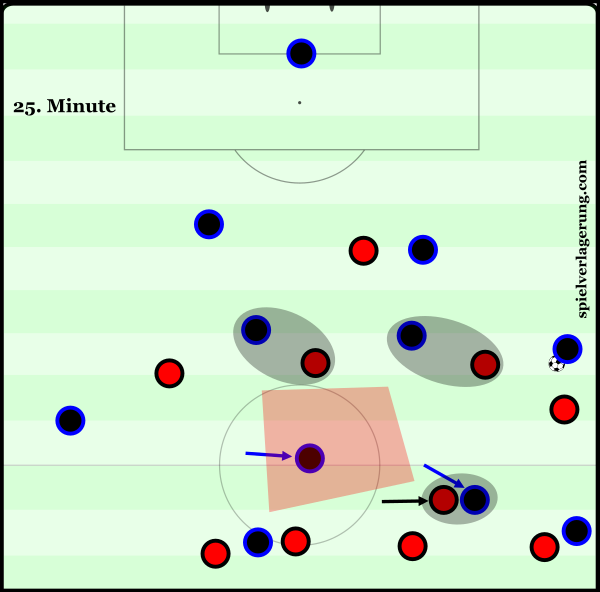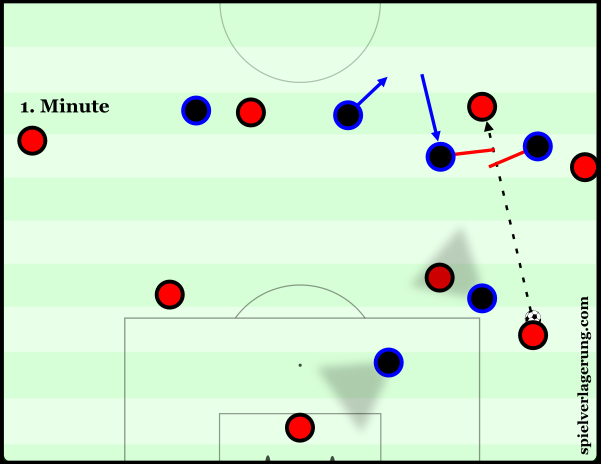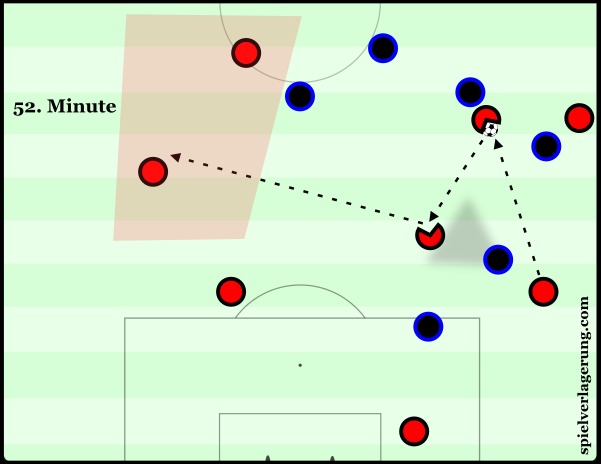Inter steal point despite dominating Milan derby
Stefano Pioli took charge of his first game for Inter on Sunday night. Having taken over from Frank de Boer less than two weeks prior, his first game was none other than the Milan derby. With Milan sitting unexpectedly near the top of the table – a testament to the work Vincenzo Montella has done in Italy’s second city – the task was to be a formidable one.
 With doubts over the fitness of Andrea Ranocchia and Jeison Murillo, Pioli opted to start with Gary Medel in central defence alongside Miranda, while Geoffrey Kondogbia started in midfield alongside Marcelo Brozovic, with Joao Mario in the attacking midfield position. Strangely there was no place in the line-up Ever Banega, who was left out despite some good recent performances. Meanwhile for Milan, Mbaye Niang started on the left, with Giacomo Bonaventura moving into the midfield three alongside Juraj Kucka and the teenage Manuel Locatelli.
With doubts over the fitness of Andrea Ranocchia and Jeison Murillo, Pioli opted to start with Gary Medel in central defence alongside Miranda, while Geoffrey Kondogbia started in midfield alongside Marcelo Brozovic, with Joao Mario in the attacking midfield position. Strangely there was no place in the line-up Ever Banega, who was left out despite some good recent performances. Meanwhile for Milan, Mbaye Niang started on the left, with Giacomo Bonaventura moving into the midfield three alongside Juraj Kucka and the teenage Manuel Locatelli.
Disfluent Milan press and Inter’s midfield dynamics
Inter were able to display some interesting dynamics in their attacking midfield line as a result of a lack of fluency in Milan’s pressing scheme. Carlos Bacca’s lack of any consistent defensive actions forced Milan’s 8s, Bonaventura and Kucka, to engage Miranda or Medel if they tried to carry the ball out of defence. In these moments, as they were engaged, they would attempt to block forward passing lanes with their cover shadow – Kucka in particular performed this role with mixed results. Otherwise, their starting point was fairly high up and on the same line – looking to maintain access to Kondogbia and Brozovic when either were perceived to be involved in play.
This man-orientation threatened to work against them on many occasions. By taking the two Inter holding midfielders as their primary positional reference points in these moments, Bonaventura and Kucka ceded their ability to maintain a defensive shape per se, instead reacting to what Inter presented them with. In many instances, these escapades take them as far as the forward line, in situational 4-1-3-2 or more commonly 4-3-2-1 arrangements. Particularly in the latter case, this resulted in them often becoming disconnected from the rest of their midfield – namely Locatelli – and leaving the space either side of the young talent very exposed.
The behaviours of Milan’s wide players did little to alleviate this potential threat. With most of Inter’s deep build up directed towards the left side, Suso often found himself performing the dual role of maintaining access to Cristian Ansaldi and blocking the direct pass to Perisic. Niang’s role was similar, and while they were able to dissuade progression down their side at times, they were often either too wide to cover the space behind their nearest central midfielder, or when Ansaldi and Danilo D’Ambrosio positioned themselves deeper, too advanced, leaving Locatelli to cover the entire width of the pitch without a great deal of vertical compactness to help him. Making matters worse, Locatelli spent most of the match seeking out a Milan player to follow – not greatly unlike a small child looking for his mother in a supermarket – seemingly without any consideration for what he was leaving behind him.

Joao Mario’s attraction of Locatelli frequently opened up central space for Candreva to move into, but Inter seemed reluctant to use it.
This leads the discussion to Inter’s maximisation and occupation of these spaces. It was not unusual to see Inter occupy them statically with two, or at times even three attacking midfielders, leaving Locatelli helpless. The most common mechanism used, however, to open the space completely was for Joao Mario to move from the centre towards the left hand side. With Locatelli defending in a strongly man-oriented manner, Mario’s movement to the flank dragged the youngster away from the space in front of the central defenders – thus completely clearing what was already a gaping hole in the Milan midfield.
Once cleared, this space was filled usually in a couple of ways. Most prevalent was the inward movement of Antonio Candreva. The Inter midfielder looked to sneak in behind Bonaventura in the right halfspace, where he could take advantage of the vast amount of space afforded to him by the lack of vertical compactness. Similarly, there were occasions when Candreva would stay wide, and allow D’Ambrosio to move infield. However, they often rejected these options to attack the heart of the Milan defensive line directly in favour of direct passes down the wings or tight combinations there. As it so happened, on one of the few occasions when they exploited Milan’s lack of cover for Locatelli’s lateral defensive movements, Inter were able to find Candreva free in a favourable central position from which he was able to finally convert one of his many long shots.
Milan’s initially unclean first progressions
Milan continued their trend of poor build up play against their city rivals. While Gustavo Gomez is fairly competent in possession, the same cannot be said for his central defensive partner, Gabriel Paletta. The 30-year-old, once of Liverpool, was borderline dreadful in his distribution – wasting possession on a number of occasions with decidedly pointless cross-field passes to players in no position to receive and secure the ball.
Credit must, however, be given to Inter for how they further restricted Milan’s first progressions. While direct passes did seem to be the order of the day from Vincenzo Montella, Inter were able to limit their options through good displays of compactness. Not only were the Nerazzurri strongly horizontally compact, with Candreva and Perisic acting diligently in preventing Milan from finding easy passes through the midfield, they were able to stay connected to their defensive line. Thus, when dealing with Milan’s direct passes, they could maintain access to wherever the ball happened to be travelling to, establishing an area of local compactness around the Milan player, and winning back possession with good backwards pressing. Kondogbia and Brozovic were key in this regard, ensuring that they protected the area in front of the back four through thoughtful staggering.

Inter initially did well to deny Milan access to their pivot, whilst using their horizontal compactness to prevent direct passes behind the line of pressure.
In addition, Inter’s control over Locatelli further stifled Montella’s side’s build up play. Starting from a 4-4-1-1 block, Joao Mario would develop access to the Milan holding midfielder, either maintaining this man-orientation after a centre-back switch if Icardi were to press the receiver along the line of the previous pass, or the Brazilian would diagonally press the receiver, keeping Locatelli in his cover shadow whilst the Argentine striker marked the ball-far centre back. Were the 18-year-old midfielder able to receive the ball behind the two Inter players and the line of pressure they formed, he would find himself under intense pressure from either Kondogbia, Brozovic, or even both. The intent from Pioli’s team to prevent Milan from playing through their young talent was clearly visible.
Milan did not receive much help from their other young talent in this respect either. While the rise of Gianluigi Donnarumma has been impressive to say the least, the 17-year-old has a lot of work to do on his distribution. Although it was his throw which set the counter attack for Milan’s first goal on its way, there were far more instances of him either giving up possession easily, or turning down passes which would have helped Milan progress through the first line. A couple of very similar episodes embodied this, with Gomez using his goalkeeper to free up a player higher up the pitch while Inter employed a man-oriented press at goal kicks, only for Donnarumma to woefully over-hit the intended clipped pass to the free fullback.
Their ineptitude was compounded by structural issues higher up the pitch. While playing direct does not necessarily mean that a team cannot control the game in their opponents’ half, usually the factors that lead to one also occur in the other – namely connections and spacing. Just as Milan struggled to form connections around the ball in their positioning in their build up, once they played direct, the recipient was often isolated with no one to lay the ball off to – thus causing him to be crowded out and losing possession. One of the puzzling details pertinent to this facet of Milan’s game was the positioning of Bonaventura. Despite playing as a central midfielder, the Italian has a curious tendency to drift to the left flank when his team are in possession. While this in itself does not have a catastrophic result on the team’s structure, the lack of any balancing movements by Niang or anyone else was. This led to Milan often trying to build attacks without any presence in the left half-space, which greatly limited their options – especially when the ball was on that flank.
Milan’s Resolutions
Come the end of the first half, however, Milan were starting to find their feet. With Inter just as vertically open as them during periods of pressure high up the pitch, any improvement in their first progression was likely to grant them easy passage into the Inter half.

Kucka eventually provided Milan with a route to Locatelli, allowing him to dictate the direction of play.
The improvement came from the right hand side. Kucka dropped slightly deeper, looking to play in front of the Inter midfield line instead of trying to receive behind it – a tactic made exceedingly difficult due to Inter’s aforementioned horizontal compactness in that part of the pitch. This made it easier to form connections with Abate and Locatelli. Now armed with a structure to get their central midfielder on the ball, Milan were able to bypass the first line of pressure, and occasionally manage to switch play around the ball-oriented Inter block.
Conclusions
While the level of quality on show in the most recent instalment of the Milan derby was by no means the highest it has been in the last 20 years, Sunday’s game certainly did not lack drama. Both teams’ inability to control counter attacks testified greatly to this fact, as neither team displayed cohesive possession structures consistently enough to prevent their opponent from steaming through into their half. A match characterised by back and forth play which would not have looked out of place on a basketball court, it was a thrilling encounter – but thrilling in a “trashy film” sense as opposed to fine art.
Milan’s turtling at the end ultimately did not save them what could prove to be a vital three points, as Perisic grabbed an equaliser at the death, but it would be hard to suggest that Pioli deserved nothing from his Inter debut.


1 Kommentar Alle anzeigen
Treeman November 28, 2016 um 7:49 am
Hey SV,
Couls we expect a full analysis of AC Milan like you guys did with Empoli a while ago? And particulary whats different this season compared to last season?